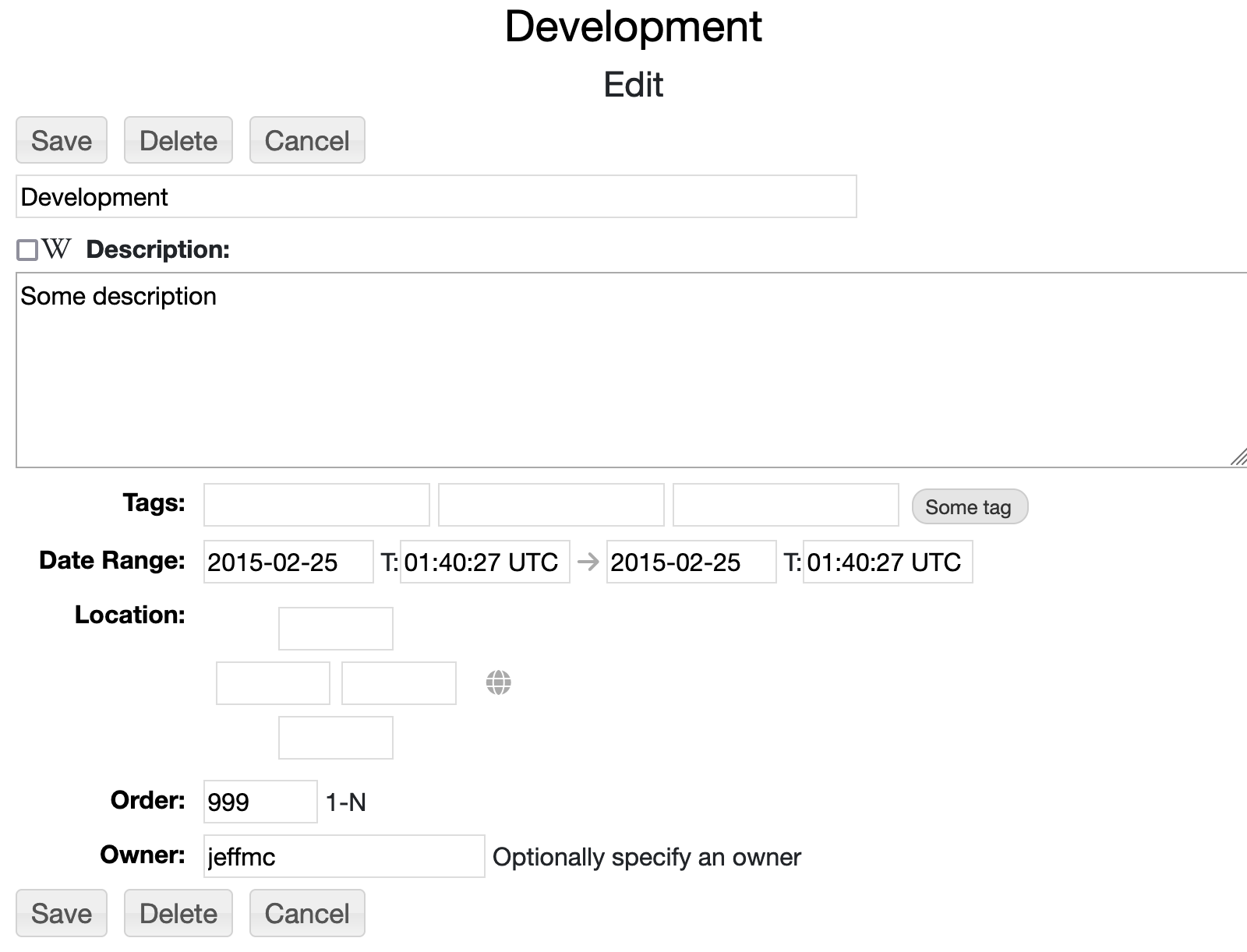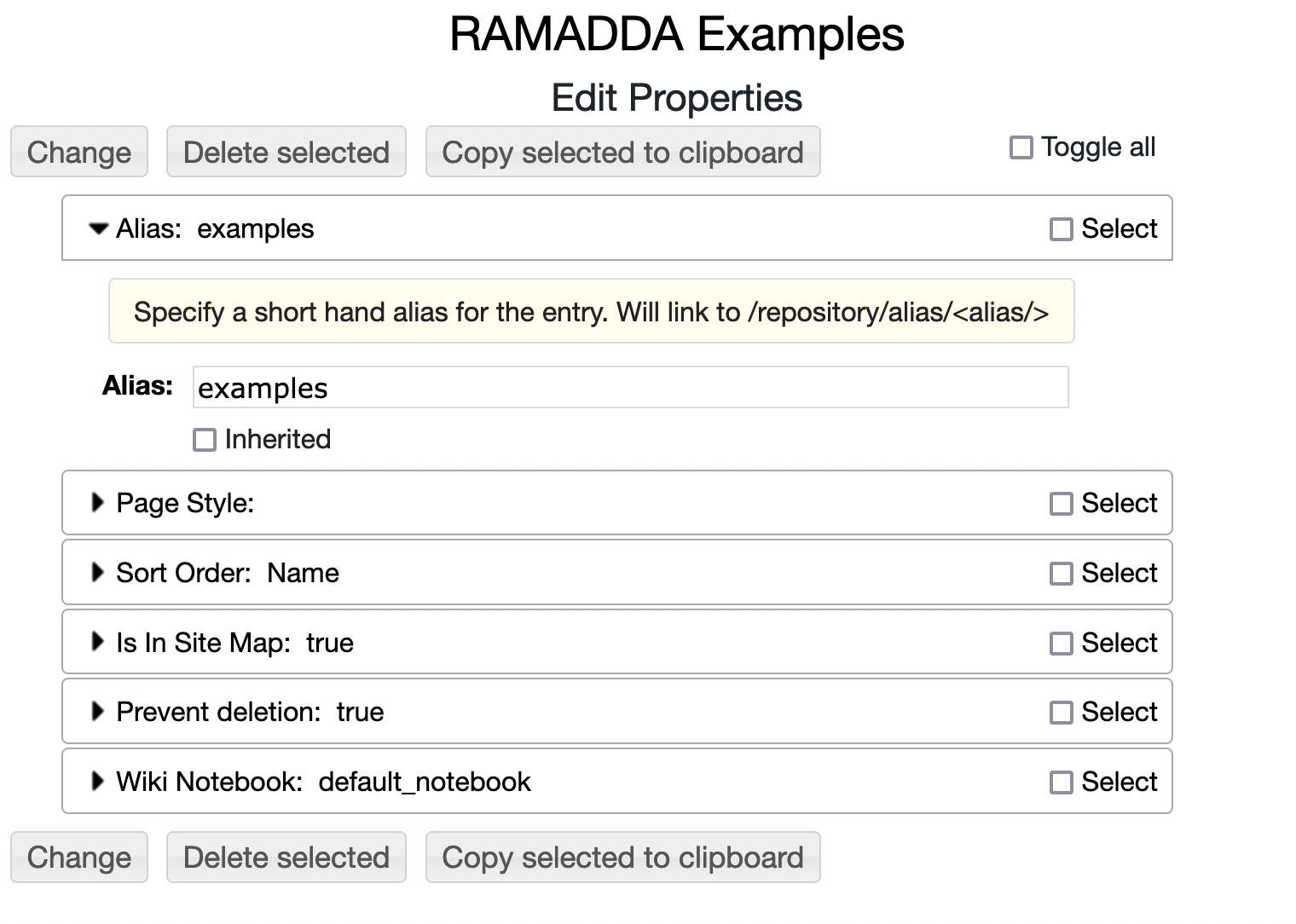Once an entry is created you can edit its name, description, time range, lat/lon bounding box and other fields with the Edit Entry link in the Edit menu:
Which takes you to the Entry Edit form:
 Image 2: Entry Edit Form
Image 2: Entry Edit Form
Normally, the description for an entry is shown within the default display for the entry's
type. Checking the
checkbox overrides
the default display to use description as wiki text and the editor is changed to
the wiki text editor. More information available in the
Wiki documentation.
In RAMADDA entries have some basic properties that can be edited in
the edit form, e.g., name, description, lat/lon bounding box, time range, etc.
One can also add any number of other properties elements to an entry.
Clicking on the "Edit Menu -> Add Properties" link takes you to the
Add Properties form where you can select the type of properties to add.
There are lots (and lots) of different properties. Some are basic (e.g., tags) while
some control how the repository operates (e.g,, alias, default time zone, page style, logo)
 Image 3: Add Properties Form
Image 3: Add Properties Form
Select the type of properties to add, e.g., "Tag".
The "inherited" flag, if checked, will have that property be applied
to all descendent entries.
 Image 4: Add Tag Properties Form
Image 4: Add Tag Properties Form
You can upload a file as an attachment to an entry.
If you create a "thumbnail" attachment that is an image it will be displayed
when the entry is listed:
 Image 5: Thumbnail Images
Image 5: Thumbnail Images Image 6: Edit Properties
Image 6: Edit Properties
admin,user,user:joe,role1
- admin - site administrator
- user - the user is logged in
- user:joe - the user id "joe"
- role1 - the user has the "role1" role